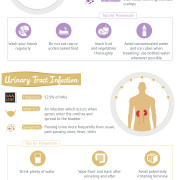5 Things you should know about AI, Machine Learning, and its Use in Healthcare

Every day, the healthcare systems from all around the world have to suffer and lose many resources, especially now since COVID-19 is suppressing it even more. Doctors might sometimes give a wrong diagnosis, treatment plans are also delayed or patients are given a false positive test for different diseases. Many resources are allocated for the healthcare department in order to ensure that patients are given a diagnosis and also the right treatment plan. It might also happen that the patient’s body cannot handle a certain medicine that doctors are not aware of and that can be even worse for the patient.

AI and Machine Learning are offering opportunities for the healthcare industry
Computers and algorithms can search huge amounts of data, much faster than the human body can, in order to find the right diagnosis, make a treatment plan, and improve the overall healthcare system and safety for their data. Healthcare is now a key industry for the big companies, using their AI and machine learning for certain healthcare projects. Many organizations are already involved in creating tools that will help the healthcare industry, even two big companies, such as IBM and Microsoft.
Besides the fact that diagnosis, treatment, and tests will be more accurate than ever, the overall costs for the medicine and pharmaceutical industries can be reduced by up to 100 billion dollars every year. Although AI and machine learning might not be capable to find the diagnosis of a patient by themselves, the doctors can use the data provided to ensure the right diagnosis was given to the patient.
An algorithm will perform better when it has exposure to data. The healthcare system is like a paradise for an algorithm since it contains a tremendous number of databases and information. Right now, all this data is going to waste because the storage systems are so different one from another and there are many privacy concerns involved.
AI is responsible for Diagnosis
A good amount of work for disease identification and diagnosis is done by the AI. What the AI mainly does is this: vital information, such as lung function, blood pressure, glucose level, etc. is being analyzed by the AI and the results are being compared to the normal levels. By comparing millions of data every second, the AI is capable of finding and identifying the right disease within seconds.
Heart diseases are one of the main problems that algorithms are trying to diagnose and prevent. The AI is now able to determine the risk factor of a person to develop heart disease by looking at its age, blood pressure, and other aspects, but it can’t make the analysis for the medication that person might be on or the condition of the other biological systems. The main focus now is to realistically make the AI predict who is at risk of developing heart disease and when this might happen, as a study by Stephen Weng suggests.
Machines are also trained to read CT scans and interpret information from other imaging diagnostic tests. This procedure is still in a trial phase, but it can also act as an assistant for the radiologist or it can indicate an abnormality that the radiologist was not able to detect.
How AI and Machine Learning helps Respiratory Medicine
Since AI is working with huge sets of complex data, it is very useful for respiratory medicine, especially for lung illnesses that develop as a result of toxic exposure, lung cancer, restrictive lung diseases, fibrotic lung disease, and other conditions. The diagnostic criteria might sometimes overlap, which is a reason why doctors should pay attention to the results of the AI and make adjustments accordingly, if necessary.
The AI can also compare different results of a CT scan for the lungs of a patient or it can compare with the results of other patients. This way, the AI is more effective and can easily find the information about a patient that suffered from the same condition really quickly. Once they have the right diagnosis, they can find the treatment plan and monitor the overall results and improvements of the patient.
Monitoring Drug Response
AI and machine learning can gather information from different platforms, as there was an experiment where social media was put to work and connect people that suffer from cancer in order to ensure different treatment options. AI did a very good job and sorted the information from Twitter and Facebook comparing the different answers from the participants. The pharmaceutical industry is now trying to determine what treatment works better for a patient based on their genealogical tree and biology.
Monitoring Health Epidemics
The algorithms are used to perform regular checks on news reports, social media, and government websites in order to find an outbreak. There was one case when a computer algorithm was able to detect an Ebola outbreak more than one week faster than the World Health Organisation did.
This is just the beginning of AI and machine learning to perform at their best for the healthcare industry. It might be a long shot for the algorithms to be able to diagnose a patient by themselves, but as they are gathering more and more data, there is a possibility that in the near future they will be able to develop a full diagnosis and treatment plan without aid from a specialist.









Leave a Reply
Want to join the discussion?Feel free to contribute!